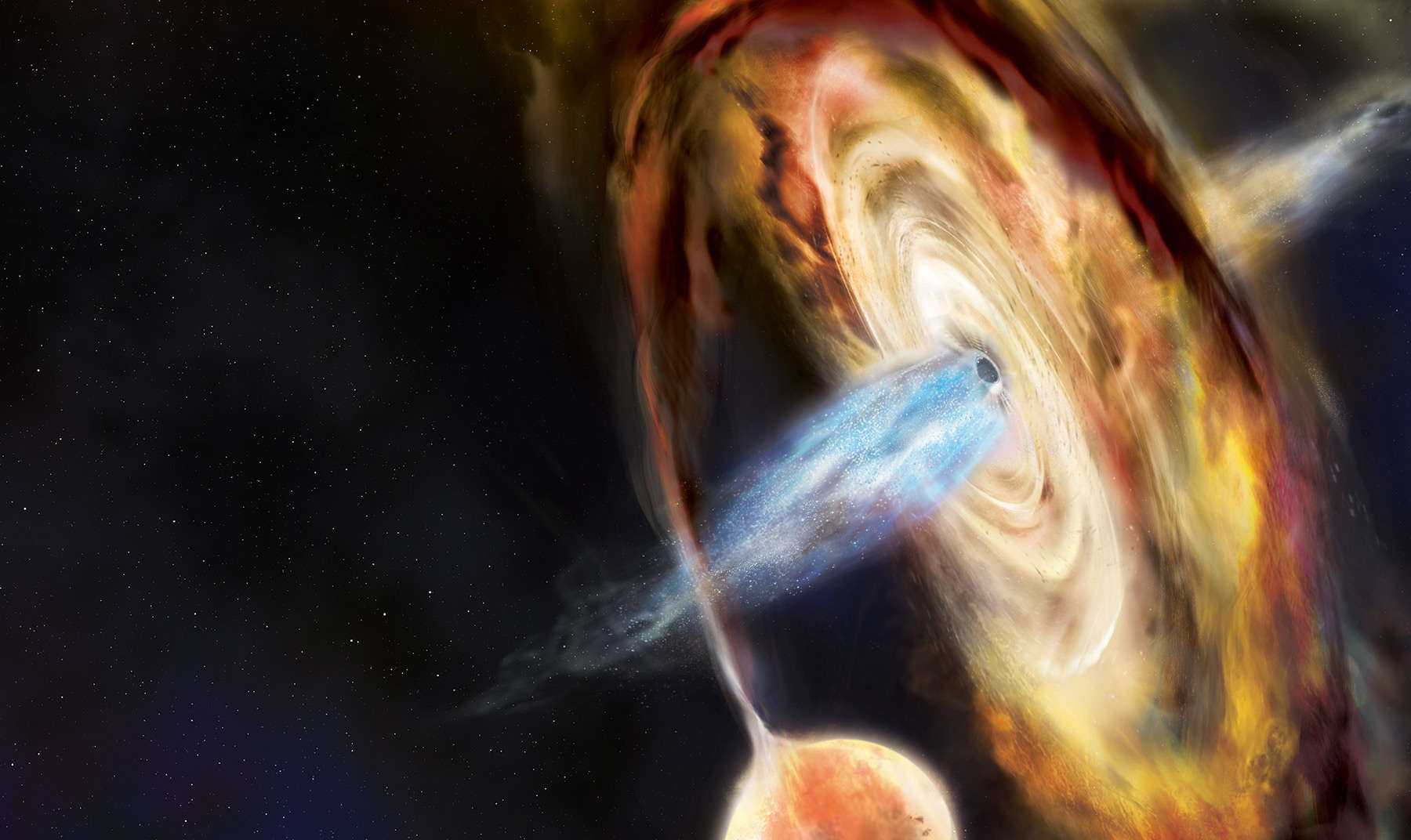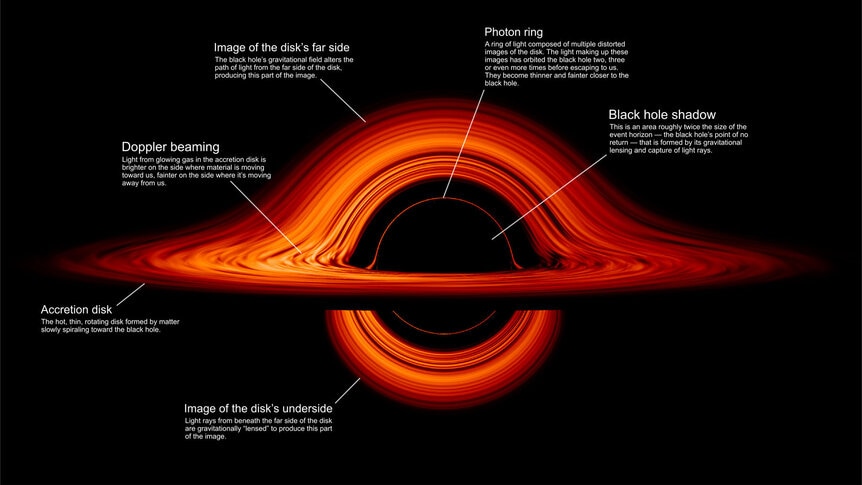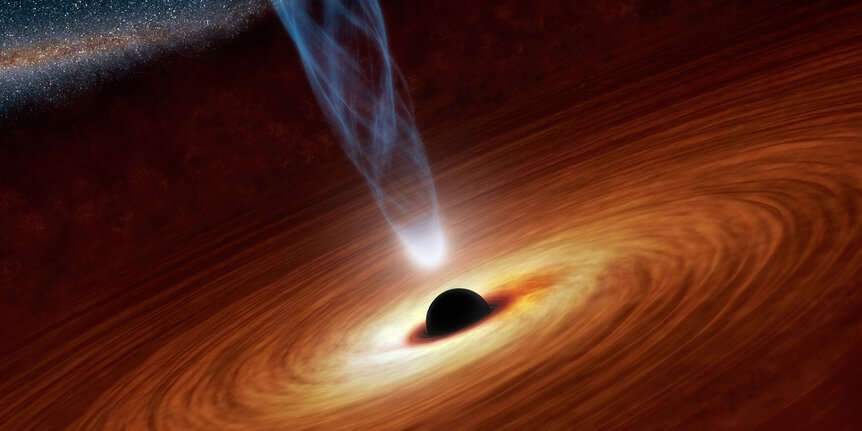Create a free profile to get unlimited access to exclusive videos, sweepstakes, and more!
Turns out, you *can* get something out of a black hole... but it’s not easy

One of the defining characteristics of a black hole is that nothing can come out of them. That’s why they’re named such; they’re like an infinitely deep pit, and not even light can escape. A hole that’s black.
But, like so many ideas in science, when you take a closer look, that absolute statement becomes a bit relative. You can get something out of a black hole: Energy. And, it turns out, you can get a lot. Like, a lot a lot.
A new paper has come out showing how magnetic fields can be used to extract huge amounts of energy from a black hole, and may power some astrophysical phenomena we see around them. It’s not exactly easy, and it’s not like you’ll be able to charge up your phone or heat your house with this technique (more like you’d vaporize them down to their constituent subatomic particles which would then be accelerated outwards at very near the speed of light*), but it’s still extremely cool.
A black hole in some ways can be described simply: Take an object with mass, and compress it so much that its escape velocity becomes the speed of light. When that happens, anything that gets too close gets pulled in. Nothing can escape.
You can actually describe them using plain old regular (Newtonian) physics, but to get the full story you need to use Einstein’s Theory of General Relativity. The math gets hairy fast, and even the concepts get screwy. But when you do apply GR, you find that a black hole, any black hole, can be completely characterized using only three things: Its mass, its spin, and its electric charge.
A classical black hole just has mass, sitting there warping space and time all up, and a lot of the important stuff it does depends on its mass. But it can spin, too, in many ways just like a planet or a top or a star. In fact, many (if not most) spin at very near the speed of light.
There’s another very weird thing black holes can do: As they spin, they drag the fabric of spacetime around them like a smoothie around a whirling blender blade. This is called frame dragging (or more technically, the Lense-Thirring effect) and it has some odd side effects. For example, if you’re inside a region around the black hole called the ergosphere, you literally can’t sit still; inside that volume space itself is being pulled in the direction of the spin, so you go around the black hole whether you want to or not. It’s like being attached to a circular treadmill. Around and around you go.
But that’s the key to getting energy out. It takes energy to spin up an object, energy that can be released by slowing it down, and a spinning black hole has a lot of energy. But how on Earth — well, how in the Universe — do you do that?
There are lots of ways, theoretically, but one that hasn’t been plumbed much by theorists until now is what’s called magnetic reconnection.
Very hot gas can be so energetic the electrons are stripped away from their atoms, and we call it a plasma. As the charged particles in plasma move around they create a magnetic field that can get very intense. The magnetic field lines (like you see in bar magnet diagrams) can be very strong, and that gives them tension — think of it like bending a piano wire; you have to apply a lot of force to keep it bent. If you let go, SNAP!
Plasma orbiting a black hole can have ridiculously strong magnetic fields. As the plasma jostles around, the magnetic field lines can get wrapped around as well, tangled up, and snap. When they do, they release energy. One way they do this is by accelerating the subatomic particles around them, sometimes to speeds near that of light. Solar flares on the Sun’s surface are created this way, so it’s a real effect.
This is where things get weird (yeah, sure, I know you’re thinking; this is where).
Particles are created from energy and blasted away in pairs. If things are aligned just right, one of those particles screams away in the direction the black hole is spinning, and the other in the opposite way. If this happens inside the ergosphere, the one moving in the same direction as the spin will get out, escaping into space. The other, going against the spin, will fall in. But, because it was moving in the opposite direction of the spin, this in effect slows the black hole down.
The black hole slowing means it releases energy, which is taken away by the particle that escapes. From your point of view, standing (well) outside the black hole, you just see particles come hauling out at near the speed of light and the black hole slowing a bit.
In other words, energy has been extracted from the black hole.
In the paper the scientists calculate that the energy efficiency is 150% — that means you literally get more energy out than you put in. That sounds impossible, but remember you’re tapping into an energy source that already exists, the black hole’s spin. So energy isn’t created from nothing.
This process can generate vast amounts of energy. Now, mind you, in that form — a field of subatomic particle radiation strong enough to cook you quite thoroughly — the energy isn’t terribly useful to us humans. Maybe in thousands of years we’ll be at a technological stage where we can get to a black hole and use that energy, but for now that’s a wee bit beyond us.
But not nature. When we look at black holes, especially ones in the centers of active galaxies, we see them flaring with energy quite a bit. It’s not entirely clear why; one idea is that material from the disk of matter around them falls in abruptly, blasting out powerful bursts of energy. But it’s possible that magnetic reconnection in that plasma is accelerating particles in tremendous quantities to just a hair shy of the speed of light. If so, then nature is doing what we ourselves cannot: Get something out of a black hole. And it’s a lot of something, since the flares seen in active galaxies can easily be millions of times more luminous than the Sun.
Now, you might not want to stand too close to a source like that. But if there’s a way to tap into (and store!) it, a few seconds worth of that energy would power all of human civilization for a long, long time.
Someday. There are a few technical issues to solve first. But I can picture, in the future, every house coming with a spinning quantum black hole that not only provides all your energy needs, but, if used in the old school gravity way, would also make a decent garbage disposal.
*Which, as has been noted, is “bad”; though the issue of total protonic reversal hasn't been shown to rise to the level of statistical significance (Spengler et al., 1985).

















